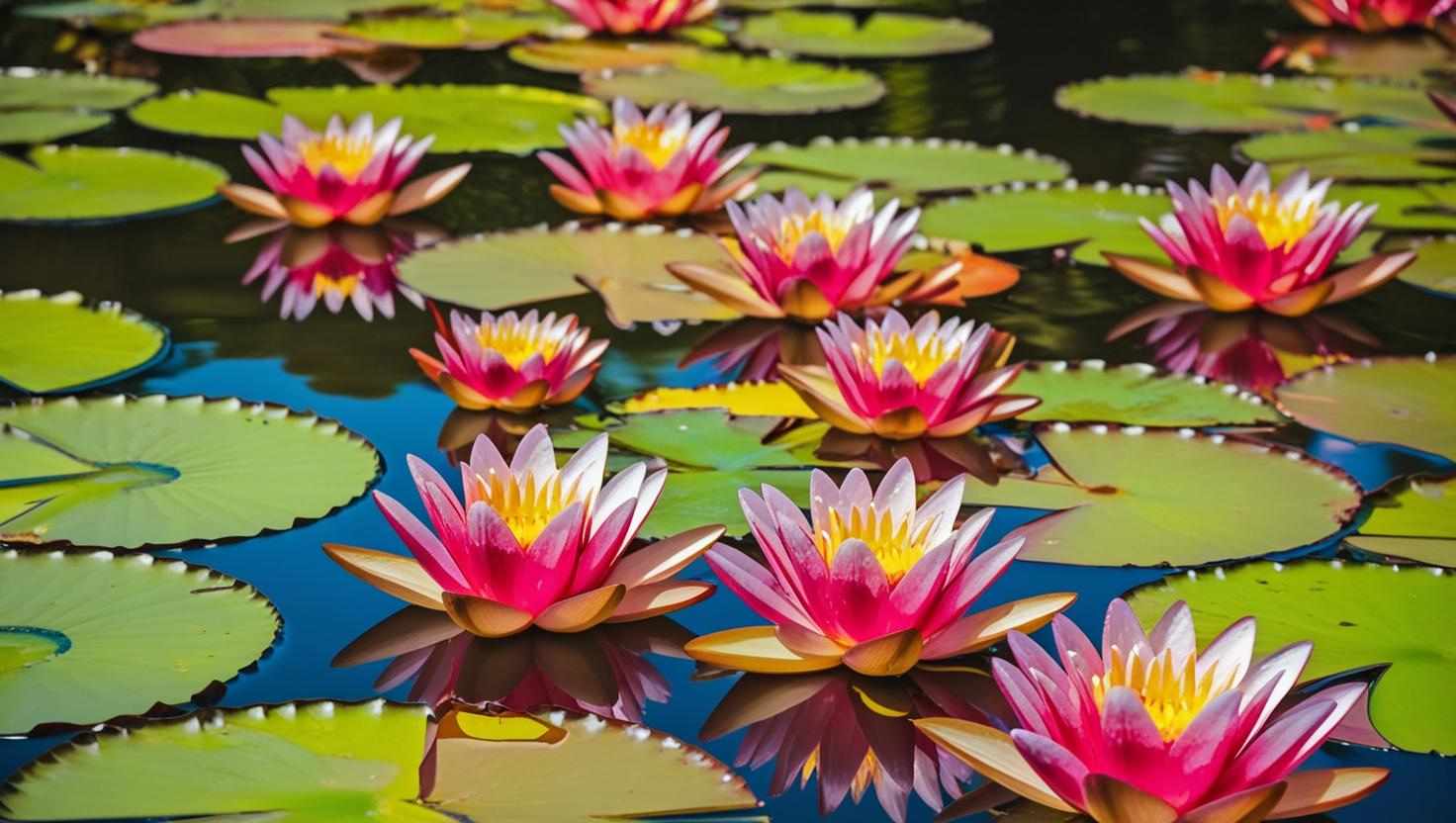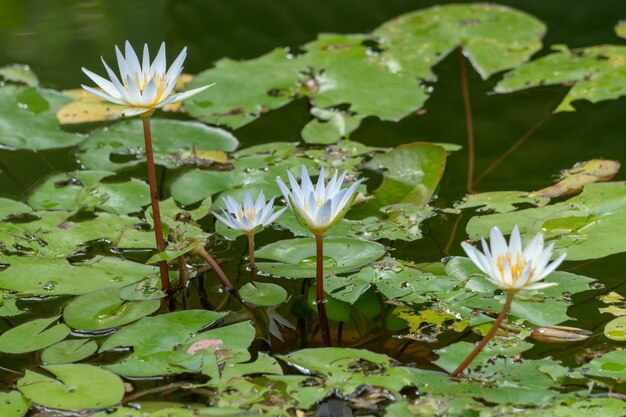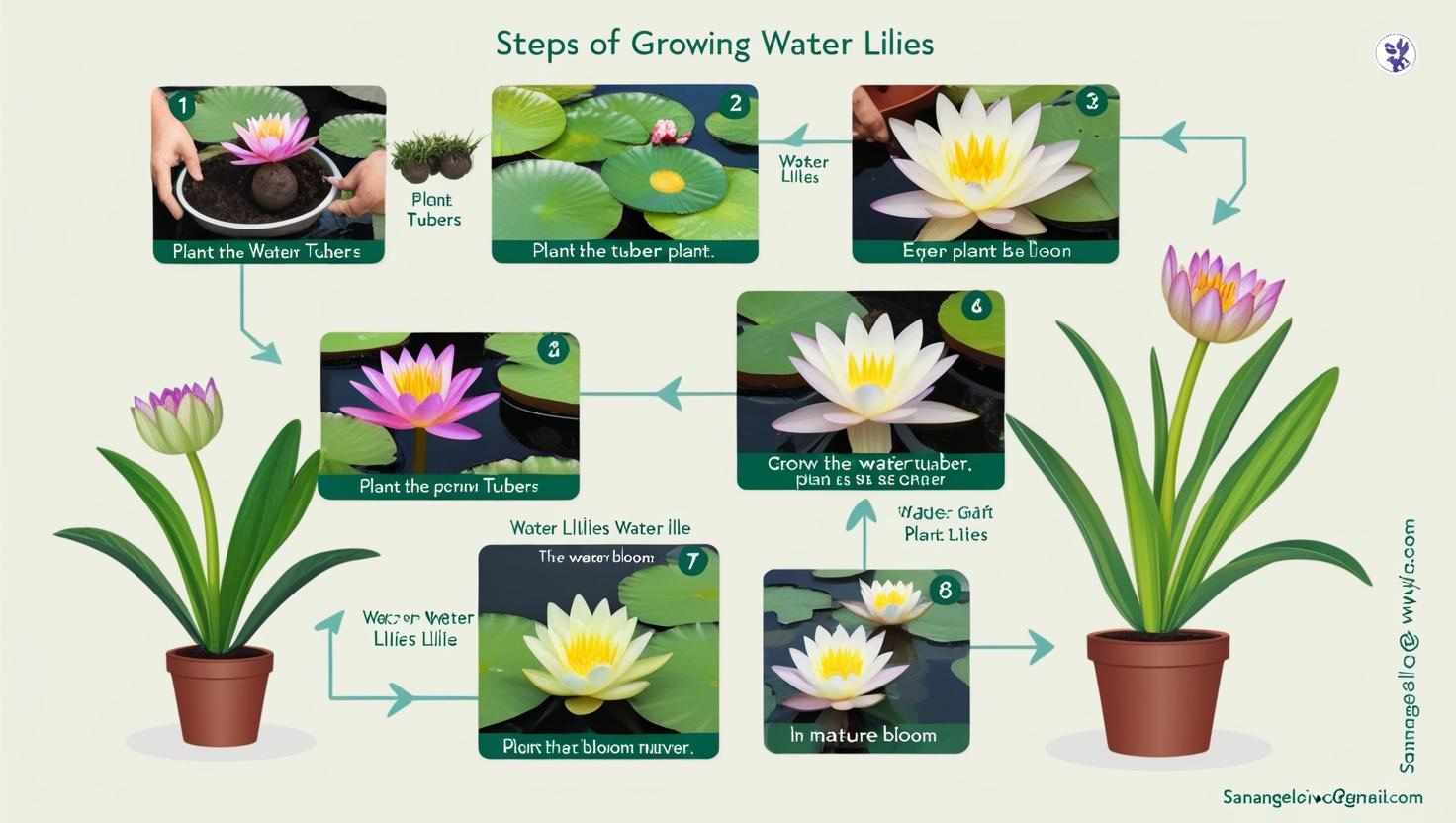
The single, ostentatious, multipetaled flower of the fragrant water lily blooms from June to September. Although they are usually white, flowers can occasionally be pink or yellow. Floating leaves are spherical, leathery, and roughly 10 inches in diameter. A single slit that runs along the leaf's radius from the outer edge inward is what divides the leaf. An individual stalk affixing to the leaf's centre secures the fragrant water lily to a thick, meaty rhizome under the water's surface. Let us discuss the reproduction process of a floating water lily.
● Reproduction and Spread:
There are two methods of reproduction: vegetative and sexual. Fragrant water lilies use rhizomes to proliferate into interconnected aquatic habitats. During flowering (June–August), sexual reproduction lasts three to four days. Pollen is typically produced at the end of the second day of flowering. Most of the pollen transfer that enables sexual reproduction in fragrant water lilies is attributed to two pollinator species: the European honeybee (Apis mellifera) and the seasoned sweat bee (Lasioglossum versatum). Local-level propagation happens when rhizomes and seeds release ethylene gas, which causes nearby seeds to germinate and enables many seeds to mature and simultaneously create vegetative structures. The various ways that reproduction occurs are as follows:
● Seed Reproduction-
Water lily flowers start to wilt and drop into the water after about three days of blooming. When they reach maturity, the unopened bloom floats to the top, where the pod splits apart and discharges the seeds onto the water's surface. If fertilized, they would produce seeds. The seeds are about the size of a salt particle and are covered in a gelatin-like substance that breaks down rapidly. The offspring of a hybrid tropical plant may not necessarily look like the parent plant.
● Tuber Reproduction-
In certain hybrids, the parent plant's crown is surrounded by tubers, which are spherical, walnut-shaped structures from which new plants sprout. Compared to the parent plant's mature leaves, the young leaves are smaller. The tuber must be wrenched off of the parent plant, the plant must be taken out of the pot, and the soil must be gently cleaned from the roots.
● Viviparous Reproduction-
Some plants reproduce viviparously, producing a new plant on the upper leaf surface, above the point where the stem connects to the lower leaf surface. It seems like a tiny nub at first, and then it becomes like a small plant altogether. When the leaf degrades, the new plant may float away or remain affixed to the stem until it also degrades. Viviparous plants have the advantage of being able to withstand lower temperatures. N. "Tina," N. "Panama Pacific," and N. "Dauben" are viviparous plants.
Wrapping Up:
The two ways that floating water lily reproduce properly are by vegetative reproduction and seed production. The plant will only have flowers for three to four days after it blooms. Insects like bees, who are necessary for pollination, are drawn to the flower's sweet and aromatic juice on the first day.
Pollen will wash off these critters' bodies and fertilize the female reproductive organ (stigma) if they have visited other water lily flowers. By visiting The International Water Lily Collection, you can learn more about the reproduction process. Contact them for a unique experience by visiting their official website: https://saiwc.com/.
















Write a comment ...